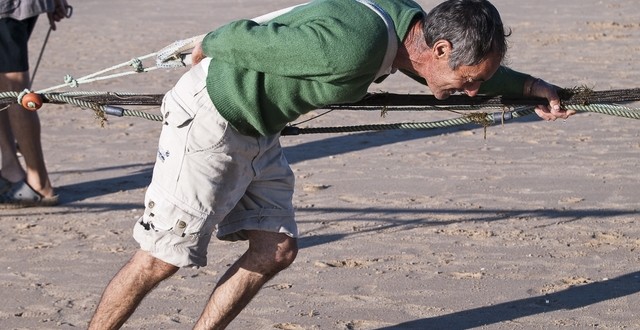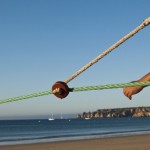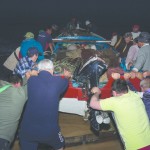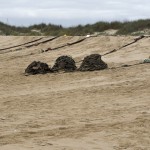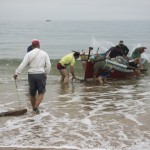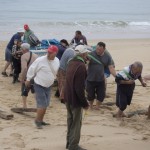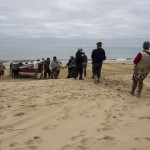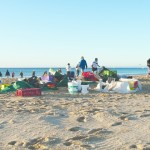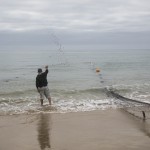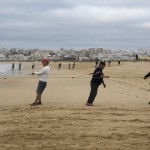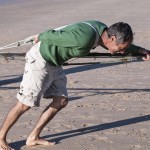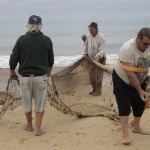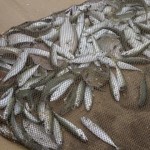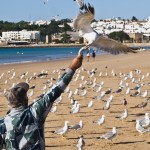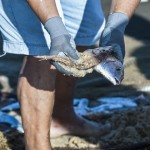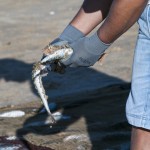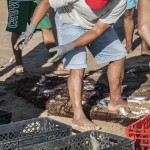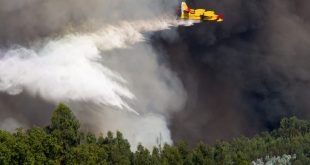Fishing from the land.
Six o’clock in the morning. We parked at the isolated spot where the team were starting to arrive, in the area of Meia-Praia in Lagos. We crossed the railway line and the dunes, heading resolutely towards the boat – known locally as a ‘calão’ – whose location we could guess, but which we couldn’t see. Once again, we were going to watch people fishing using the ancient ‘xávega’ net, similar to a beach seine. Just an outboard motor and lighter nets gave the process a modern touch.
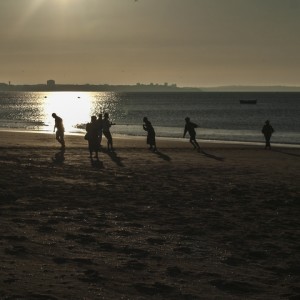
At six thirty and with the first light of day, the preparations began for sliding the boat to the water, with the aid of wet planks. José Bala, a so-called ‘Indian of Meia-Praia’, is the master and owner of the net, which he uses for reasons of tradition and for the pleasure it gives him, not for profit, which is less. He gets on board with two crew members, leaving one end of the rope on the beach. He will release the net into the water, with floats keeping one side on the surface and weights holding the other side close to the bottom, creating a semi-circular wall. It will take about 40 minutes until he reaches land with the other end of the net, some 80 metres from the point where he started, and after having moved about 100 metres off the beach. The rest of the team have a bite to eat, rest and chat. Finally, the boat returns to the beach and is pulled out of the water. The 32 people divide up into two groups and start to haul in both ends of the net, pulling it to shore with the fish inside it. It is hard work, walking continuously over the sand, with a harness over their shoulders to which they attach the ropes for pulling. At the same time, the two lines of people move closer to each other, closing the bag. We saw only one member under the age of 40; but there were several who were twice this age. Two elderly women were also in the team, doing their bit. After an hour, with the team chatting and joking, the floats become visible, showing that the net is arriving. It is at this point that there’s a bit of tension as people start to wonder how much and what sort of fish will there be in the net? And it’s also when the seagulls arrive, looking for a feast. When there are lots of fish, you can see the water boiling with the movement of the imprisoned fish. If it’s not boiling, the master throws a couple of handfuls of sand to provoke a reaction. That’s what fishing is like: an unknown. And the team are paid in fish, depending on how much is caught. Sometimes they leave with their hands full; on other occasions they have just a little and sometimes go away empty-handed. The final, marvellous spectacle is sharing the little mackerel with the seagulls, which come to pick them from people’s hands and fight amongst themselves for the biggest fish. How to watch this spectacle which is almost unique in the Algarve? It depends on the weather, but try on Tuesdays and Saturdays. To the east of the petrol station there’s a passage. On the beach, turn to the right and you’ll find the ‘xávega’ net about 100 metres away.
 Eco123 Revista da Economia e Ecologia
Eco123 Revista da Economia e Ecologia

